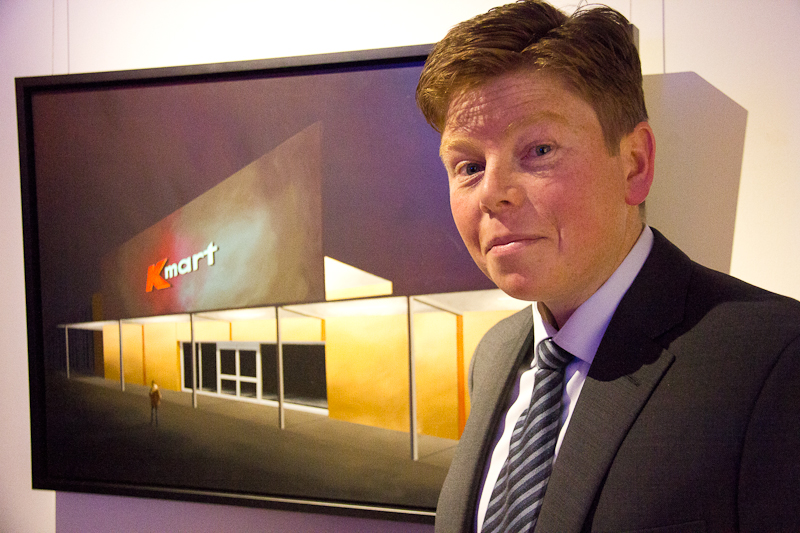
Cartoonist-turned-painter Andrew King said he was born in the wrong decade.
The 36-year-old Carleton industrial design graduate said he wishes he had been born in the ‘50s or ‘60s because “everything back then had more style,” including the way people travelled.
The era, and his fascination with it, inspired King’s newest collection of paintings, After 8, which opened at the Wall Space Gallery Feb. 4.
“I’d always been fascinated with road trips, so I thought, why not try to replicate a classic road trip somebody would have done in the ‘60s, ‘50s time period?” he said.
King drew inspiration for his collection by taking a road trip in November down Highway 9 from Ottawa to New York. He made the road trip as authentic as possible by dressing the part, driving a 1969 Volvo P1800, and stopping only at motels, diners and “kitschy” attractions.
“I wanted to explore this forgotten highway to see if that stuff still exists, and sure enough, it did,” he said.
King said the eerie, nostalgic feel he got while driving after 8 p.m. stood out to him, so he decided to focus on lighting and shadows for his fourth solo show at the gallery. In addition to paintings of mysterious silhouettes cast on old motels and K-Mart signs shining through the darkness, King experimented with 3D models and Plexiglass to achieve the desired effect.
King, whose work experience has primarily been in cartooning and animation, said he gets his bearings by approaching his work as if he’s creating a story.
“So every painting is like a scene from a movie, and then I piece it together,” he said.
After his road trip in November, King said he had to work very hard to complete the 42-piece collection. Getting started on the collection was daunting for King because he had to fill the entire gallery. But he said his time at Carleton taught him how to prioritize.
“I found industrial design works you to the bone, but it taught me discipline, it taught me deadlines, it taught me to do the best possible work I can in a short amount of time,” he said.
King said being at Carleton helped him figure out what he wanted to do with his life — but in the end, that wasn’t industrial design. After having submitted cartoons to the Ottawa Citizen’s student page, an editor told him about an animation course at Algonquin College. He took the course and never looked back.
“I loved it,” he said. “It was exactly what I wanted to do. Cartooning, having fun, and designing stuff.”
King worked in Toronto, Montreal, and Vancouver on a number of animation projects. Some notable cartoons he worked on were Savage Dragon, Flash Gordon, and Watership Down. It was in 2002 when animation started turning digital, but instead of accepting a 30 per cent cut to his paycheque, he quit.
“I was unemployed, I had $50 in the bank, and I needed to pay the mortgage,” he said. “So I thought, you know what, I’m going to try painting.”
King described his style as “realism without the real,” and the bold colours, sharp lines, and dynamic subject matter in After 8 definitely reflect his diverse artistic history.
“I’ve taken stuff I learned at Carleton, I’ve taken stuff I’ve learned in animation, stuff I learned just by looking at other artists, and going to art museums,” he said. “And this is everything coming together.”





